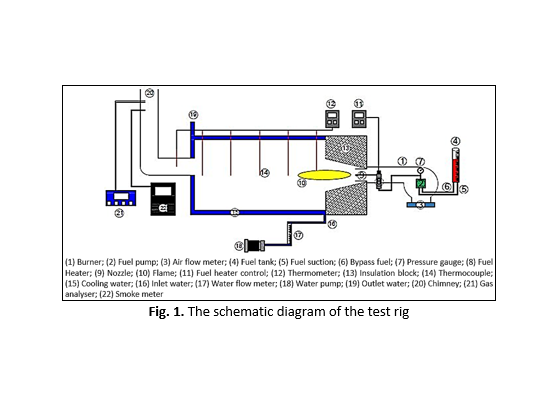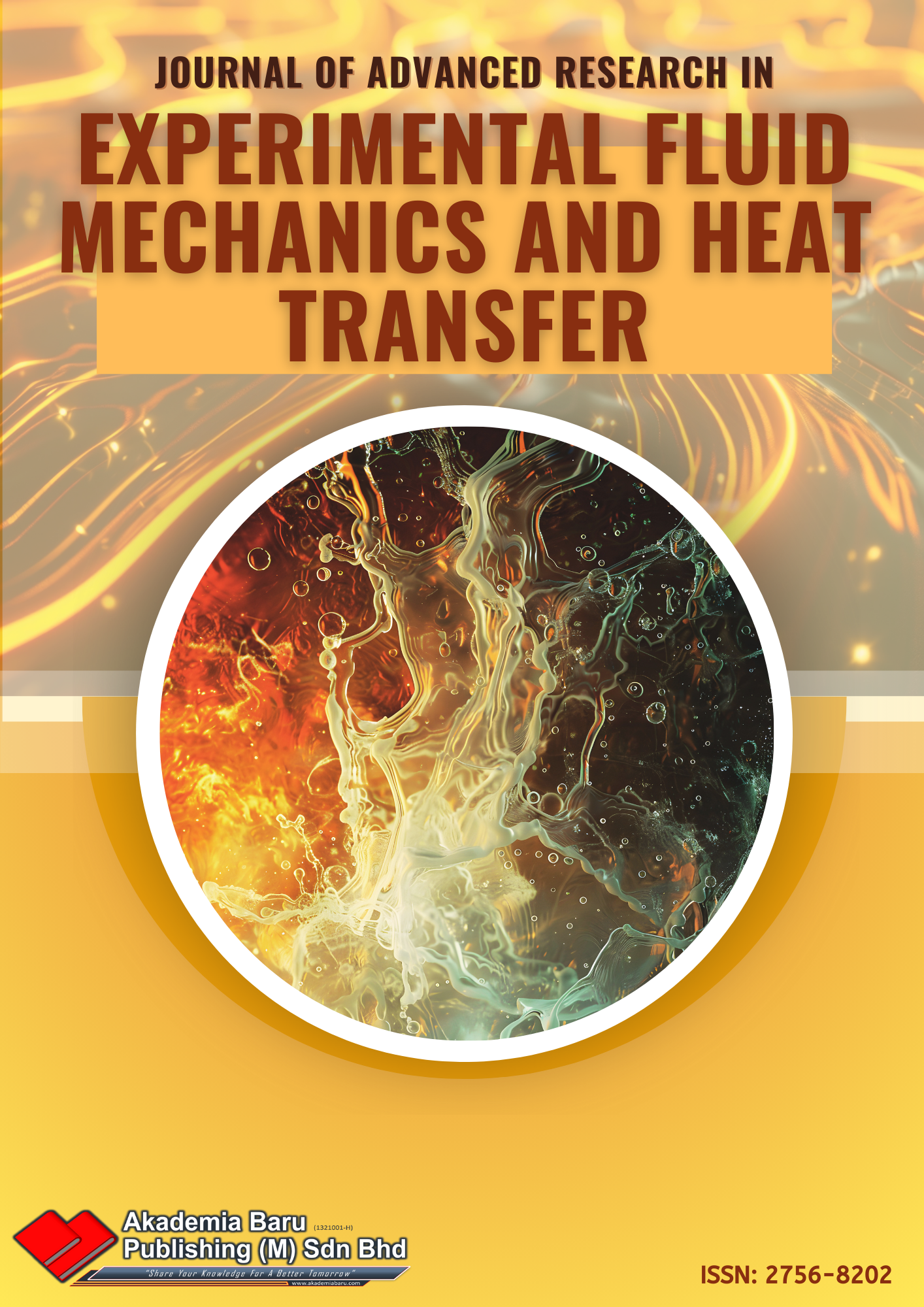Experimental Study of the Effect of Heating Diesel Fuel on Burner Performance and Emissions
DOI:
https://doi.org/10.37934/arefmht.19.1.4455Keywords:
Heavy-fuel oil (HFO), exhaust emission, thermal efficiencyAbstract
Heavy-fuel oil (HFO) is primarily used as fuel to generate electricity in marine engines and boilers. Because of its high energy density, accessibility, and low cost, is a desirable commodity from an economic standpoint. These characteristics of HFO include its high viscosity, high molecular weight, high asphaltene content, and complex compositional diversity. It leads to a non-uniform spray pattern and inaccurate injection viscosity. Furthermore, incomplete combustion caused by large fuel particles will result in incomplete vaporization and high exhaust gas particulates, mostly unburned hydrocarbons; it also produces toxic gases like NOx. To address this problem and for the purpose of using heavy fuel oil, this study improved diesel fuel properties and the combustion system. The high viscosity of heavy diesel fuel (before inserting it into the burner) is reduced by adding a suitable heating device to the fuel line. Light fuel (LD) is also mixed with heavy diesel fuel (HD) to reduce the fuel viscosity. A mixture called LHD (50% LD and 50% HD) was prepared and tested in a burner and combustion chamber. Burner performance and exhaust emissions are evaluated when heating the fuel at three degrees (50, 70, and 90 °C). The results showed that the thermal efficiency (nth) of LHD fuel has its highest value at 90, followed by 70 and 50 °C, respectively, and also (2.2%) the highest percentage increase in thermal efficiency when heating at 90 °C compared to heating at 50 °C. and the percentage increase (1.9%) was at 70 °C compared to 50 °C as well. The results also show the behavior of NOx with changing fuel temperature, and 50°C is the best because it gives the lowest NOx levels, followed by 70 °C and then 90 °C, respectively. The percentage increases in NOx emissions at 70 and 90 °C compared to heating at 50°C are 46 and 69%, respectively. The temperature of 50 °C will be the best due to the good behavior of NOX compared to its behavior at 70 °C and 90 °C, as well as the chances of its formation being greater as the temperature of the flame increases.
Downloads























